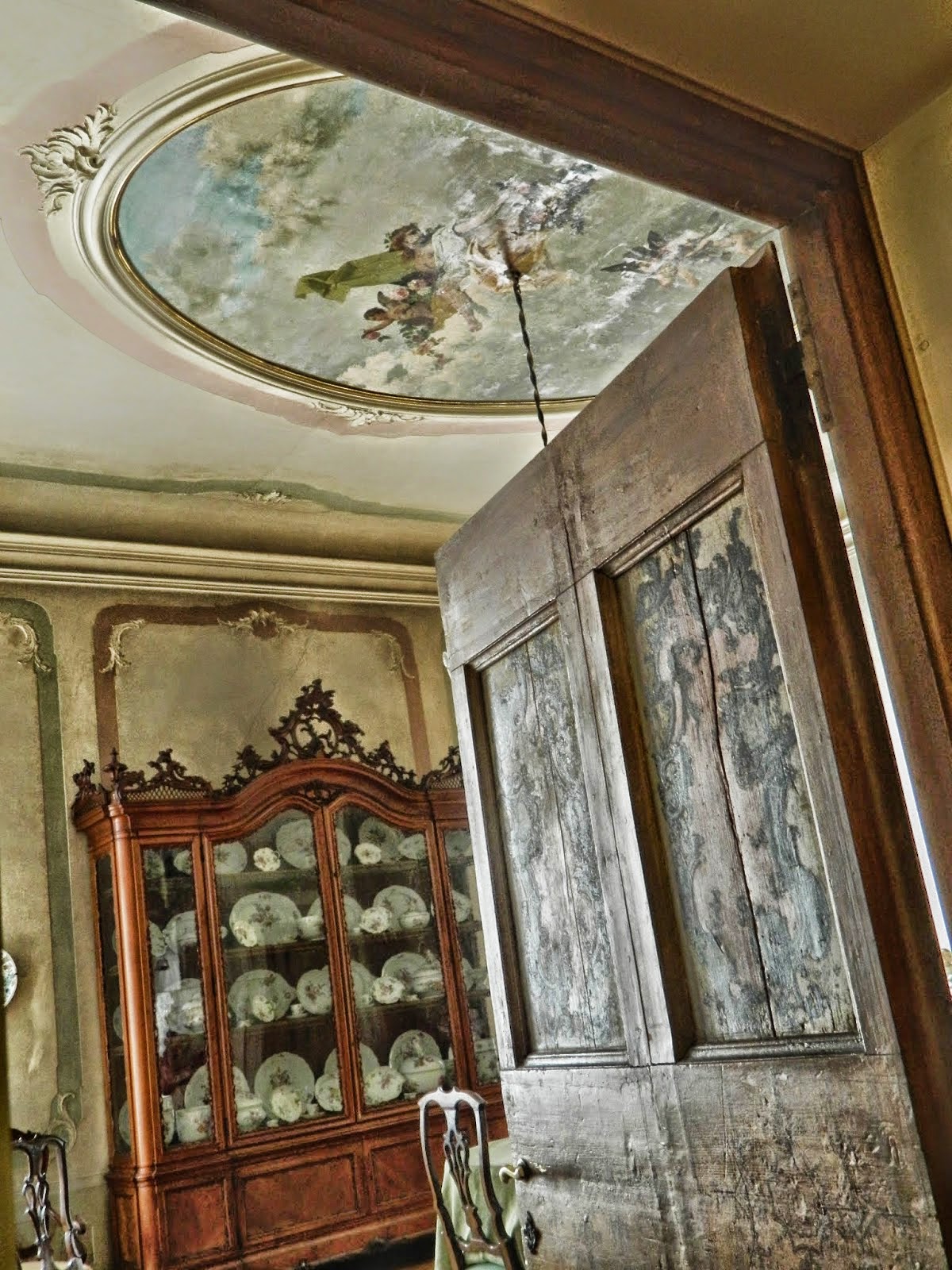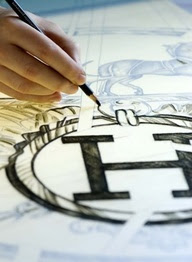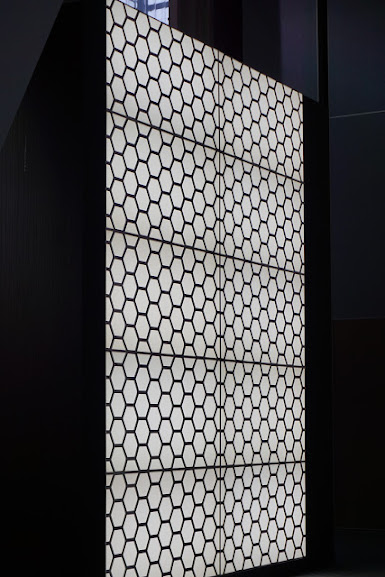Why In Design Column: Uncovering the rich history of Meissen hard-paste porcelain
Why In Design Column:
Learning More About The History Of
Hard-Paste Meissen Porcelain
While Visiting Venice, Italy.
Since I have loved antiques most of my life, I enjoy collecting and using select vintage and antique tabletop pieces for entertaining on special occasions. Tabletop antiques and collectibles are easy enough to keep because they don’t take up as much space as larger items, and they are often more reasonably priced. Plates, tea service, silver and other tabletop pieces seem to bridge the generation gap in a way that some antique furniture may not. An antique porcelain dinner service can look fresh and gorgeous on today's table just as it did generations ago, especially when mingled with modern day items. Additionally, antique tableware is exquisitely made with the craftsmanship perfected over centuries. At the top of my list of plates to collect are the rich, historical patterns from Meissen. However, it is certainly not inexpensive, and it can also be difficult to find a complete collection together.
Hard-Paste Meissen Porcelain
While Visiting Venice, Italy.
Since I have loved antiques most of my life, I enjoy collecting and using select vintage and antique tabletop pieces for entertaining on special occasions. Tabletop antiques and collectibles are easy enough to keep because they don’t take up as much space as larger items, and they are often more reasonably priced. Plates, tea service, silver and other tabletop pieces seem to bridge the generation gap in a way that some antique furniture may not. An antique porcelain dinner service can look fresh and gorgeous on today's table just as it did generations ago, especially when mingled with modern day items. Additionally, antique tableware is exquisitely made with the craftsmanship perfected over centuries. At the top of my list of plates to collect are the rich, historical patterns from Meissen. However, it is certainly not inexpensive, and it can also be difficult to find a complete collection together.
You may remember my post last spring when I outlined highlights from my trip to Venice. Our group was invited into one of the city's most historic villas which was jam packed with antique original art and furnishings, exquisite gardens and all overlooking the famous Venetian canals from every window. This home has been left intact as it was lived in almost one hundred years ago without modern technology infused. The homeowner, Countess B, gave us a tour of her unique home where she still lives today. The villa shows the lifestyle the Countess and her husband had lived in the home many years ago after he had inherited it from his family, and visiting it was like stepping back in time. We were offered glimpses of how the upper class families lived during those eras. Avid collectors, The Count and Countess had obviously traveled, entertained and curated fine antiques and art. When I stepped into the expansive dining room I was thrilled to see the antique wall cabinet filled with original Meissen that looked in superb condition. One can only imagine the parties that ensued in that room, with the large view of the serene canals just outside the window.

I was able to inspect this beautiful Meissen porcelain. The Countess explained that she and her husband entertained with this fine porcelain and tea set for many years, and yet the collection looks to be in pristine condition. Outside of a museum, I have not seen such a vast collection of this antique porcelain.
The History of Meissen,
and perfecting the first mass produced hard paste porcelain in Europe...
It is hard to believe that all the way back to the 13th century, Europe has been importing porcelain at low prices from China because the Chinese products were very expensive. There was concerted efforts to tap into the rich, ancient art form from the East and recreate these gorgeous wares. Meissen porcelain is the first European hard-paste porcelain created. Initially it was developed by Ehrenfried Walther von Tschirnhaus until his death, then chemist Johann Friedrich Bottger continued his efforts bringing the porcelain to the world market in 1708 and introducing the first European hard-paste porcelain. This was the beginning of centuries of production of the Meissen porcelain in Dresden, Germany. The Dresden studio drew artisans from all over the world, and the pieces showcase talent from many artists who traveled to Dresden in order to work at the factory. Meissen's crossed sword signature logo was created to protect the brand, and the logo signifies that the piece was made in the factory. Today, this logo is one of the oldest trades known in Europe. Meissen has a vast amount of famous Onion patterns which are listed in various categories.
and perfecting the first mass produced hard paste porcelain in Europe...
It is hard to believe that all the way back to the 13th century, Europe has been importing porcelain at low prices from China because the Chinese products were very expensive. There was concerted efforts to tap into the rich, ancient art form from the East and recreate these gorgeous wares. Meissen porcelain is the first European hard-paste porcelain created. Initially it was developed by Ehrenfried Walther von Tschirnhaus until his death, then chemist Johann Friedrich Bottger continued his efforts bringing the porcelain to the world market in 1708 and introducing the first European hard-paste porcelain. This was the beginning of centuries of production of the Meissen porcelain in Dresden, Germany. The Dresden studio drew artisans from all over the world, and the pieces showcase talent from many artists who traveled to Dresden in order to work at the factory. Meissen's crossed sword signature logo was created to protect the brand, and the logo signifies that the piece was made in the factory. Today, this logo is one of the oldest trades known in Europe. Meissen has a vast amount of famous Onion patterns which are listed in various categories.
Up until 1708 when the Meissen factory was created and then began producing large quantities of hard-paste porcelain for the first time in Europe, soft-paste porcelain had been tweaked around Europe in order to produce beautiful items. The heavily guarded secret formula of hard-paste porcelain was being perfected at Meissen because soft-paste porcelain proved difficult to work with and had a grainy finish. Now that experiments were wielded throughout Europe to create this heavily guarded hard-paste secret recipe mixing materials and firing at high temperatures, hard-paste porcelain produced a superb material with a beautiful color white finish that many named "white gold".

Meissen's trade marked logo of crossed swords changed over the years, and this guide above can educate on how old a piece may be.
First brought to the European market, Meissen was popular in upper class homes as this one in Venice. The most famous pattern Indianische Blume (Flowers of the Indies) is an imitation of the Kakiemon style of Arita porcelain made in Japan. Select pieces can be seen at the Musee des Arts Decoratifs in Paris today.
If it wasn't beautiful enough, stepping out into the glorious gardens of the villa overlooking the canals, may even rival the interiors. With antique statues and well groomed Italian landscaping with walkways and trellises, this oasis feels like a very special slice of the Garden of Eden.
Happy Nesting
XO Tamara
XO Tamara
note:
Ruby Lane Antiques
is the new sponsor for our Why In Design column.
Please stop by Ruby Lane blog
to see my stories there as well.
story sources:
Wikipedia,
Fine Arts Museum of San Francisco,
Meissen.com
Meissen Museum
story sources:
Wikipedia,
Fine Arts Museum of San Francisco,
Meissen.com
Meissen Museum














